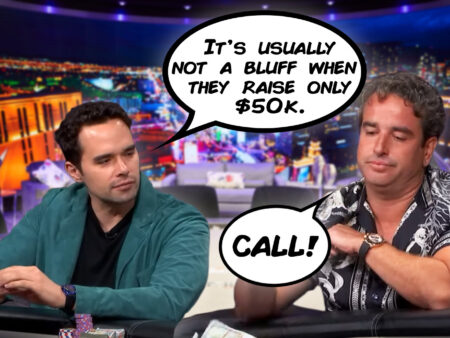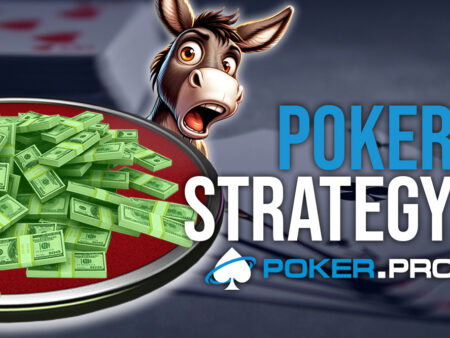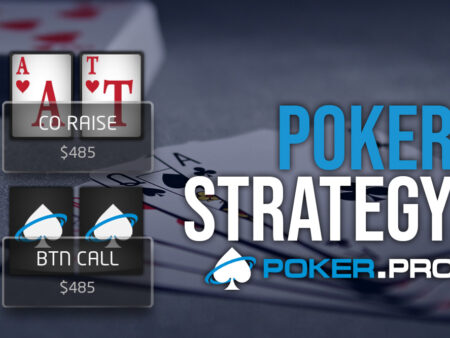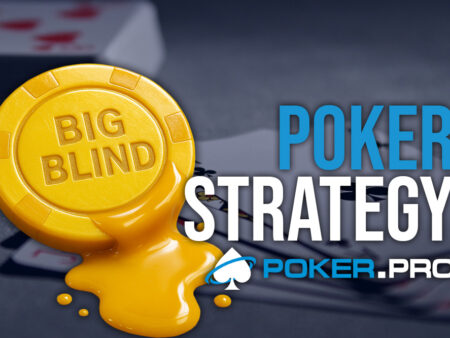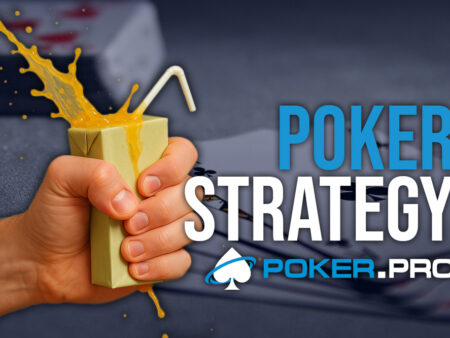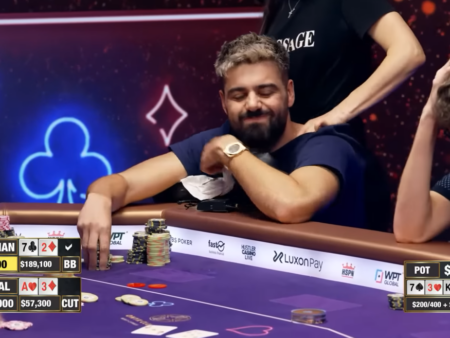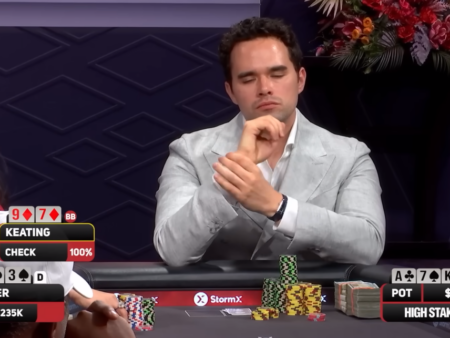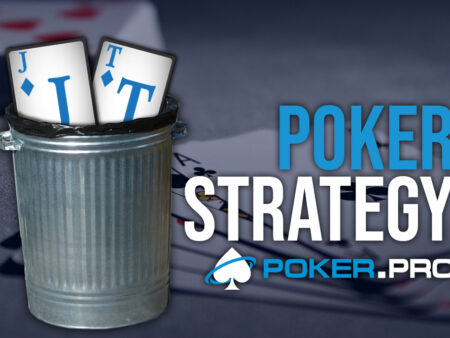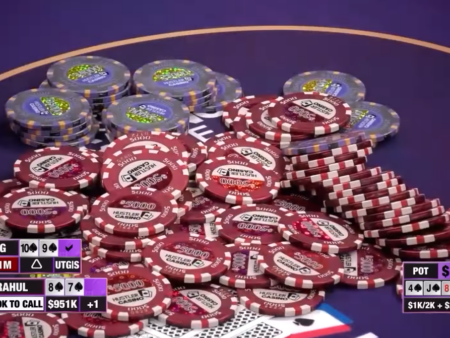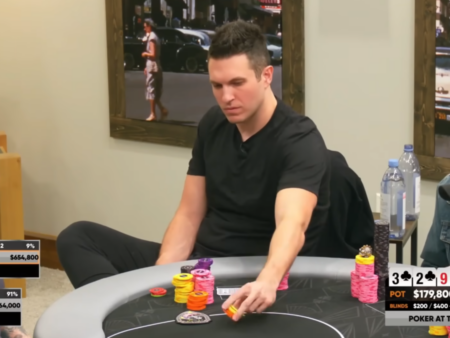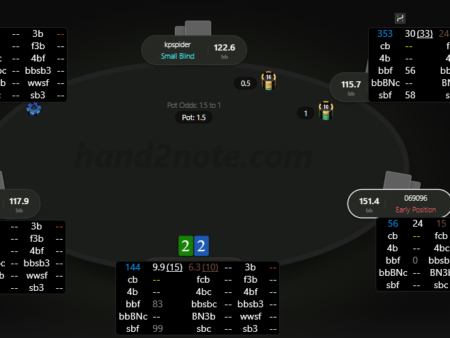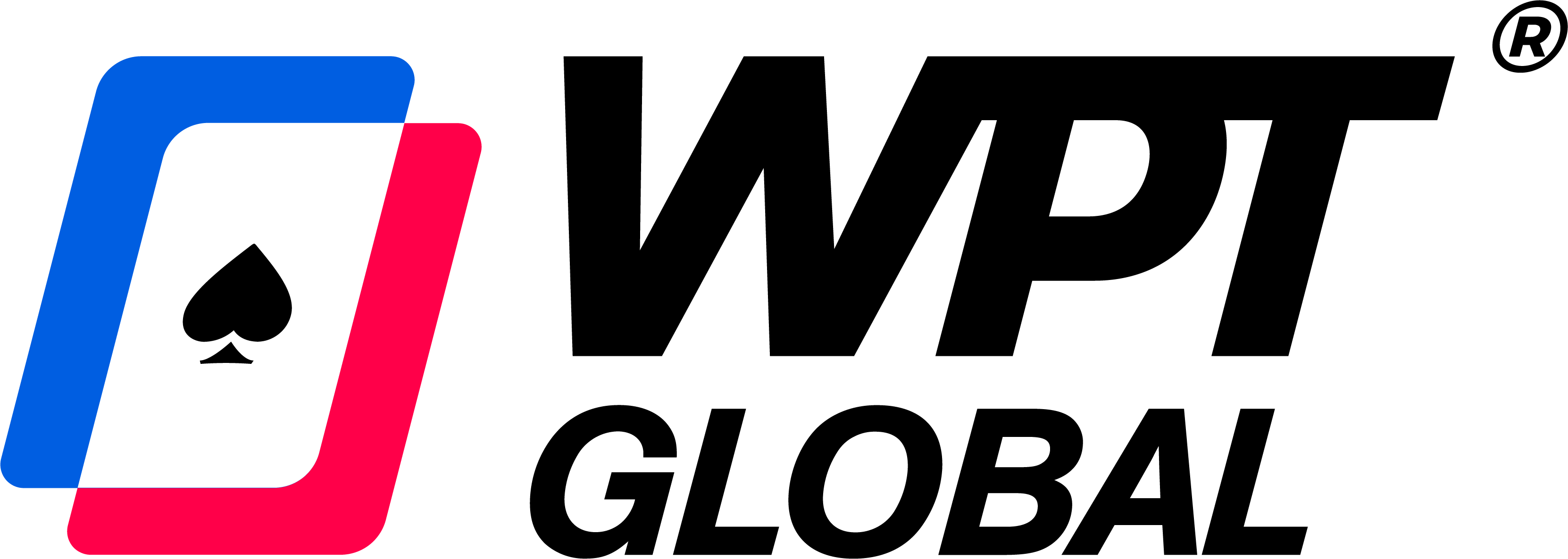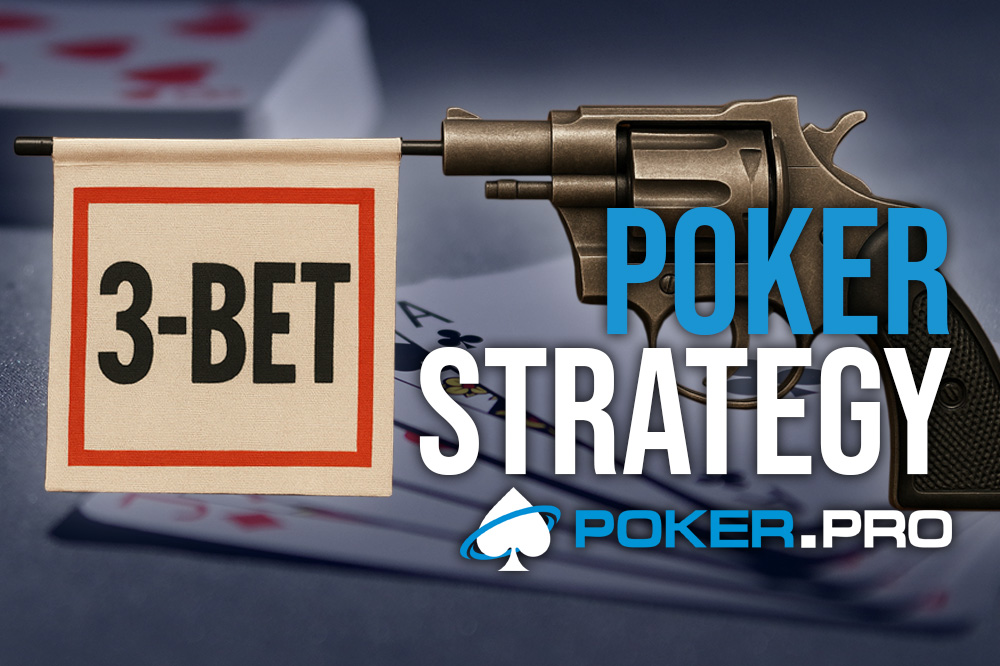
The 3-bet is one of the most used weapons in any poker player’s arsenal and can be used for multiple purposes. Knowing how and why we 3-bet is incredibly important, and before we use it, we need to know the theory behind it to extract the maximum value of the weapon. “To master the virtue of the long sword is to govern the world and oneself; thus, the long sword is the basis of strategy.” – Miyamoto Musashi.

When and How Big Do We Want to Bet?
The frequency of our betting is often determined by the equity our range has against the equity of our opponent’s range on current or future streets. It usually increases when we use smaller sizing and decreases when we use larger sizing.
The sizing we want to use is determined as a combination of three things: how often we want our bet to work, equity denial, and equity we will have if we get called. When the SPR (stack-to-pot ratio) is high and if there is a high probability that the equity will change in the caller’s favor on later streets, we start betting less frequently and smaller to keep our equity high on the later streets.
If we can prevent our opponent from seeing later streets and gaining equity, we should turn up the aggression and make our opponent fold on early streets.
30 to 50 Percent Sizing
In 3-bet pots, the most common c-bet sizing is 30 to 50 percent (HLL, HHL, HHM, HLL)*, as it gives us good ROI (return on investment); we can bet with high frequency as we have a range advantage as aggressor than the caller. We also have good equity denial and good equity when we get called.
* Letters we use to shorten the board description are H = high, M = middle, L = low, r = rainbow.
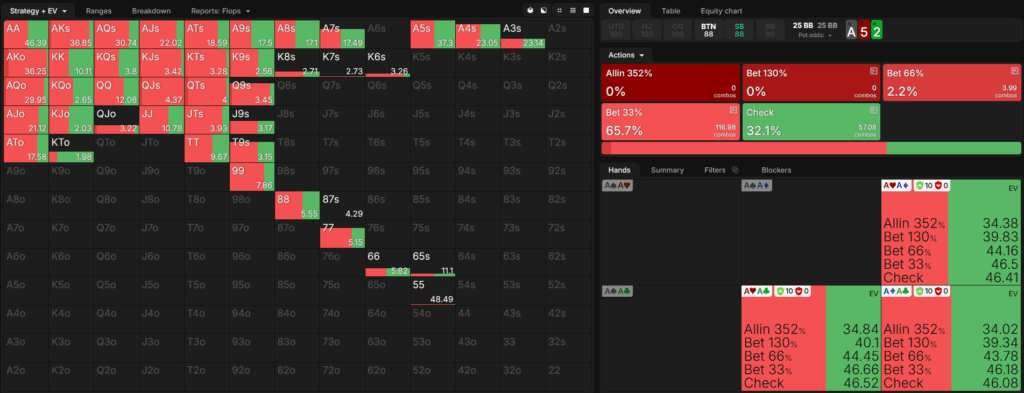
We can see that the solver is using 33 percent sizing around 65 percent of the time on the A♠5♥2♣ flop.
50 to 75 Percent Sizing
We want to use a bigger sizing of 50 to 75 percent (HLLr) to get more value now and/or to deny more equity on lower boards like 2TJ, 25J, 39J, etc., since our opponent’s trash will have more equity on higher boards.
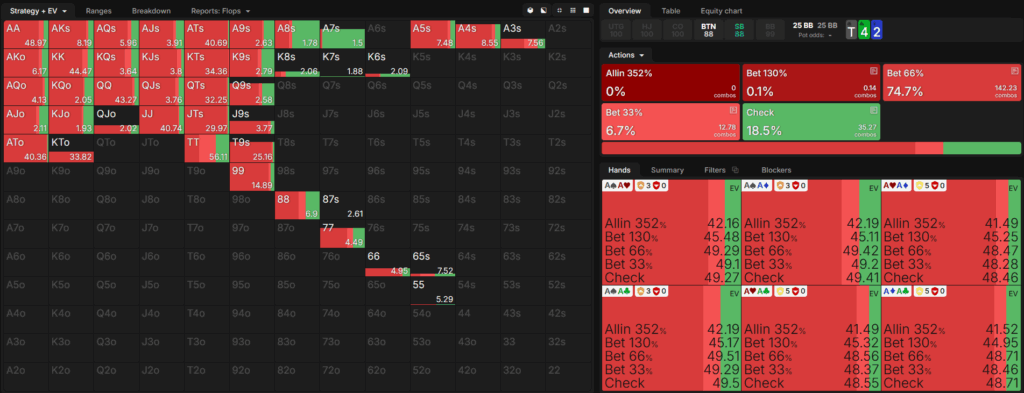
We can see that the solver uses 66 percent sizing around 75 percent of the time on the 10♠4♣2♦ flop.
75+ Percent Sizing
We use 75+ percent size to deny even more equity, and when there are worse hands for our opponent to call with, reduce SPR and get the value right now (wet boards or boards where betting big is better range vs range).
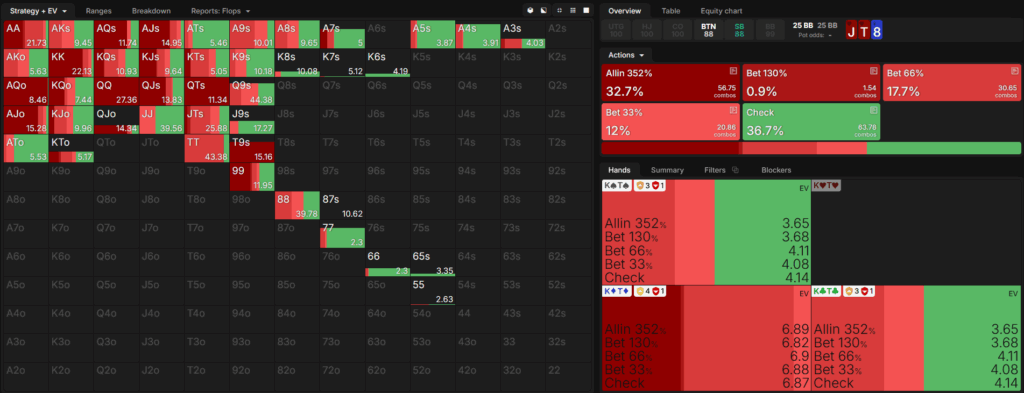
We can see that the solver uses all-in sizing around 33 percent of the time on the J♥10♥8♦ flop. If we are facing an opponent who bets a lot, we can use a check-raise instead of betting big or going all-in and achieving the same result.
10 to 30 Percent Sizing
We want to use 10 to 30 percent sizing when our hand doesn’t need protection, and we want our opponent to continue with his weaker hand, or we want to increase our ROI as our opponent is forced to overfold.
This situation would happen on a board like 9♠5♥4♦ when we have a hand like pocket aces or pocket nines, etc.
Checking Our Hand
We want to check when we have a weak equity realization when we are called, and checking also lets our opponent bluff with low equity.
All the solver examples were from SB vs BTN 3-bet spot
